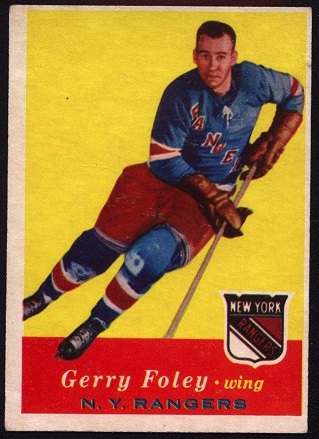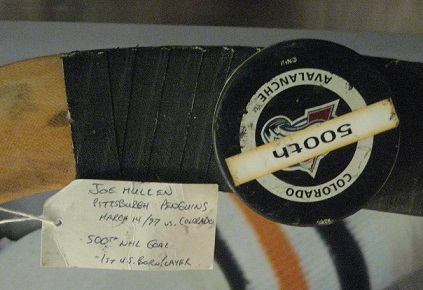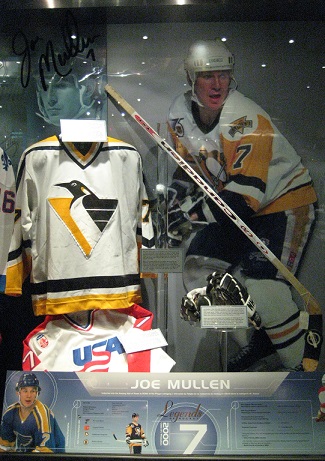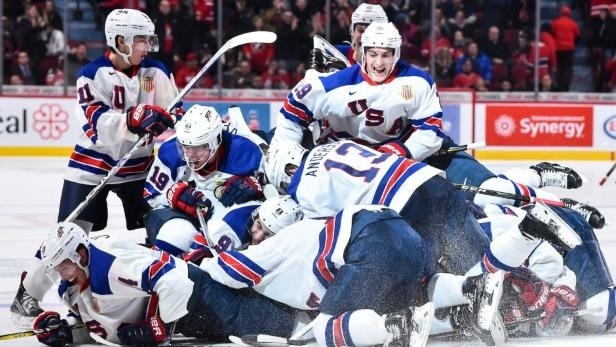Today is Hockey Day in America, typically the conclusion of Hockey Weekend Across America, an “annual event designed to engage the hockey community in celebrating the sport of hockey at all levels and exposing the sport to new audiences.” However, for the 10th anniversary of the occasion, USA Hockey has designated this entire week – February 19-26 – as Hockey Week Across America.
With the exception of the Philadelphia fanbase, all other American hockey fans, whether dwelling in Pittsburgh or traditional hockey-playing states like Massachusetts, Michigan, Colorado, Minnesota and North Dakota or new markets like California, Texas and Florida, can be proud of their local hockey environment and celebrate America’s continuing contribution to hockey.
[office src=”https://onedrive.live.com/embed?cid=2A728A26A493C6FE&resid=2A728A26A493C6FE%21146&authkey=AGewUeBfJHlq43s&em=2&wdAllowInteractivity=False&wdHideGridlines=True&wdHideHeaders=True&wdDownloadButton=True” width=”552″ height=”585″]
The table and graph show the number of players who played at least one game in the NHL for each of the seasons listed, starting with today, and going back in 10-year intervals until 1917-18, the league’s first season. Note: the data for this season is updated through games played last evening.

Since that time, the number of U.S.-born players has increased every decade. Between 1977 and 1987, Americans doubled their presence from 7.3% of all NHL players to 14.9%, no doubt inspired by the improbable 1980 Lake Placid Winter Olympics gold medal victory. By 2007, 1 in 5 players who skated onto the ice were American and as of this minute, 1 in 4 players in the NHL is American.
This influx of Americans into hockey over the past 30 to 40 years is a result of shrewd planning, patience and investing resources into players as young as under eight years old, all the way up to the under-20 junior level and the National Team Development Program. “It’s all funded by USA Hockey,” says Jim Johannson, assistant executive director of hockey operations for USA Hockey. “[The NTDP] is part of our membership as a whole so we support it the same way that we support our coaching and education programs, our youth player camps. It’s part of our operating budget. There’s also a grant from the National Hockey League that is a part of the support that goes to that program.”
To promote elite hockey development, the United States system challenges players at every age group from high school, college and a three-tiered junior system as well as the NTDP, to be the best in league and tournament games, often against players older than them. In the off-season, NTDP members will undergo skills training, working on passing, shooting and conditioning.
AUDIO: JIM JOHANNSON, USA HOCKEY 2 mins 35 sec
On the women’s side, California-born Hockey Hall of Famer Angela Ruggiero, the all-time leader in games played for the United States national team, is a product of the investment and strong growth in girls’ hockey. Ruggiero persevered at trying to even find leagues in California that would allow her to play, through getting cut from boys’ teams as a youngster simply because she was a girl. She notes the explosive growth in American women’s hockey, from 5,000 playing at the time of the first U.S. national team in 1990 to 60,000 in 2010 (and over 73,000 in 2016).
AUDIO: ANGELA RUGGIERO, U.S. HOCKEY STAR 6 mins 17 sec
After joining, learning, training and being refined in the system, three generations of post-Miracle on ice players have represented American hockey with distinction and made a positive imprint on the sport in the NHL. Mark Johnson, Tom Barrasso, Dave Christian, Phil Housley, Mark Howe and Bobby Carpenter (the first American 50-goal scorer), begat Pat Lafontaine, Mike Modano, Mike Richter, Tony Amonte, Brian Leetch and Brett Hull in the 1990s. Today, Patrick Kane, Zach Parise, Ryan Suter, Joe Pavelski, Jonathan Quick and of course, Phil Kessel, are among the top American players in the salary cap era.
[youtube https://www.youtube.com/watch?v=PIGgUiXsDIY]

The U.S. women’s national teams have also flourished, making the podium in all five Winter Olympics that women’s hockey has been contested, winning one gold, three silver and one bronze. They have dominated at the World Championships, winning seven of the last nine tournaments.
Everywhere you look, Americans are making their mark in hockey. Currently, eight of the 30 NHL teams have a U.S.-born head coach including Mike Sullivan with the Penguins and 2009 Penguins Stanley Cup-winning bench boss Dan Bylsma, now with Buffalo. The most beloved coach in Penguins history, Minneapolis native Bob Johnson, the always-positive mentor who guided Pittsburgh to its first ever Stanley Cup win, was a gifted teacher at University of Wisconsin for fifteen seasons, winning three NCAA national titles. He jumped to the pro ranks immediately after leaving collegiate hockey in 1982 and Badger Bob had amassed 234 wins with Calgary and the Penguins when he suddenly passed away in 1991, the most victories for an American-born NHL head coach at the time.
Badger Bob truly was passionate about teaching hockey and he exemplified what all coaches in America should aspire to become. To the numerous men and women in coaching, volunteering or behind-the-scenes roles who are training boys and girls to become the next generation of American hockey players: Take a bow. Hockey Week Across America is as much about recognizing and honoring your tireless commitment as it is about celebrating the achievements of American stars in the NHL.
Add The Sports Daily to your Google News Feed!
